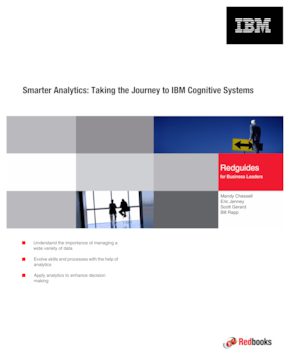Abstract
Cognitive systems move information technology (IT) beyond automating standardized administrative tasks. A cognitive system is trained to extract facts from different sources of information. It compares and contrasts this evidence to make a recommendation to a professional who is in the process of making a decision. When using cognitive systems, a professional asks for explanations of how the recommendation was calculated and might be prompted to supply additional facts about the current situation to guide and refine the recommendation.
In this model, the human and machine are in a partnership. The human has the creative thought and intuition to assimilate the facts about a specific situation, develop an understanding of what is required, and make a decision on the next course of action, particularly when the information is limited. The machine has the speed to sift through huge repositories of existing knowledge to locate potentially relevant information and make an assessment of it. Together, they combine the best knowledge available and apply it to a specific real world problem.
Cognitive systems are a revolutionary technology. The challenge is to capitalize on its potential. Looking back in history to the industrial revolution or even the revolution that the IT industry brought to modern commerce, we see that technological advances played a key role. However, the impact of new technology was only felt when it was placed in an environment where it could be used effectively and where the environment was adapted to take advantage of the new capabilities.
This IBM® Redguide™ publication describes the transition that an organization must make to embrace the cognitive systems opportunity. It describes the three aspects of this transition, which are: How information is managed, how the analytics behind cognitive systems are maintained, and how the organization's processes and people adapt to take advantage of this new capability. The guide covers the types of transitions that must occur and how IBM can help with the transformation.
Table of Contents
Executive overview
Introduction
Commissioning a cognitive system
Building an ecosystem for a cognitive system
Developing a roadmap for cognitive systems
Case studies
Summary
